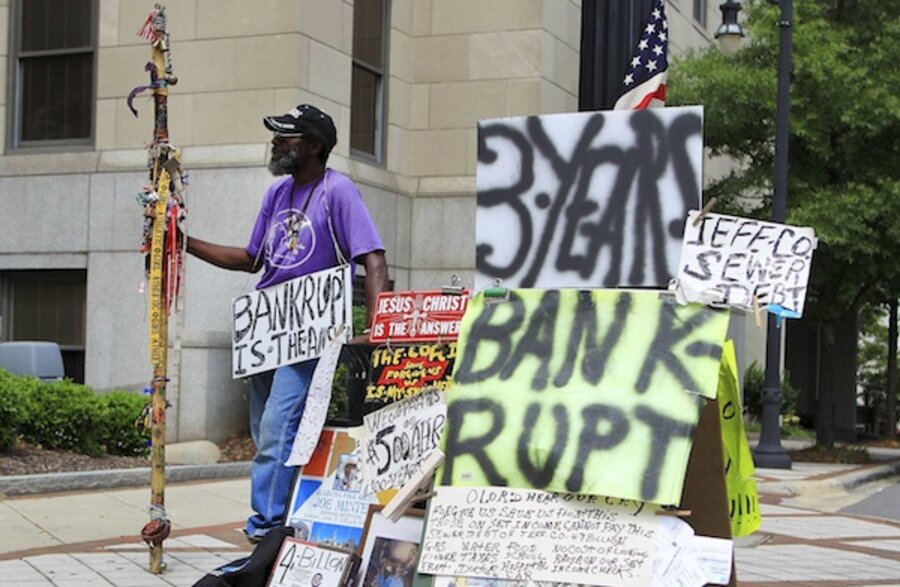Does Alabama bankruptcy signal a municipal bond meltdown?
Loading...
Last December Meredith Whitney told a 60 Minutes audience that a municipal bond meltdown was coming. Ms. Whitney has been under attack ever since.
All year long financial commentators have been asking Meredith, “show us the defaults!”
The largest municipal bankruptcy in history was filed yesterday when the county commissioners of Alabama’s Jefferson County voted 4-1 to file Chapter 9. Melinda Dickinson reports for Rueters,
The bankruptcy filing by the southern U.S. county will add to concerns about the risks in the $3.7 trillion U.S. municipal bond market, which was hit recently by the high-profile debt crisis in Pennsylvania’s capital of Harrisburg.
Jefferson County, which includes the city of Birmingham, owes $5 billion surpassing Orange County’s filing in 1994. JPMorgan held more than $1.2 billion of the county’s sewer debt as of May and negotiated aggressively to avoid bankruptcy.
On August 1, tiny Central Falls, Rhode Island filed BK, citing pension costs it can’t afford.
While Jefferson County was throwing in the towel, officials were declaring a state of financial emergency in Flint, Michigan. This is the first step toward the state of Michigan taking over the city’s finances. This seems to be a trend as Mathew Dolan writes for the Wall Street Journal,
Three other Michigan cities—Pontiac, Ecorse and Benton Harbor—as well as Detroit’s school district are run by emergency managers. Flint, the state’s seventh-largest city by population, would be the largest municipality under state control.
Down the road from Flint, Detroit mayor Dave Bing is playing chicken with union members. The municipal unions have until November 21st to agree to $42 million in concessions or Detroit’s finances will be run from Lansing.
Retired city workers collected 25% of the Detroit’s $1.2 billion general fund this year in pensions.
Out west, the City of North Las Vegas has had it’s bond rating cut twice by Fitch Ratings. NLV bonds started the year at AA- but are now rated A with Fitch calling the city’s outlook ‘negative’
In order to see what a municipal default looks like, Michael Lewis visited Vallejo, California, a city that declared bankruptcy in 2008.
“Eighty percent of the city’s budget—and the lion’s share of the claims that had thrown it into bankruptcy—were wrapped up in the pay and benefits of public-safety workers,” writes Lewis.
And while the police and fire departments in Vallejo has been cut in half, in August a judge approved the bankruptcy plan for Vallejo, with its creditors ending up with 5 cents on the dollar, while public employees received something like 20 and 30 cents on the dollar.
This is what it looks like when a government can’t use the printing press to default slowly.





